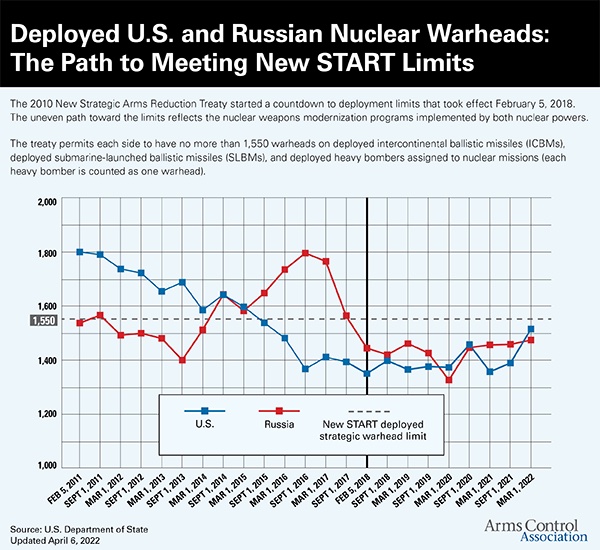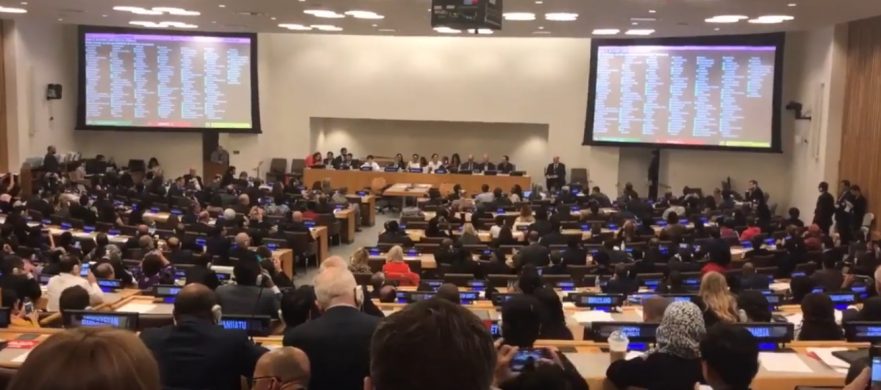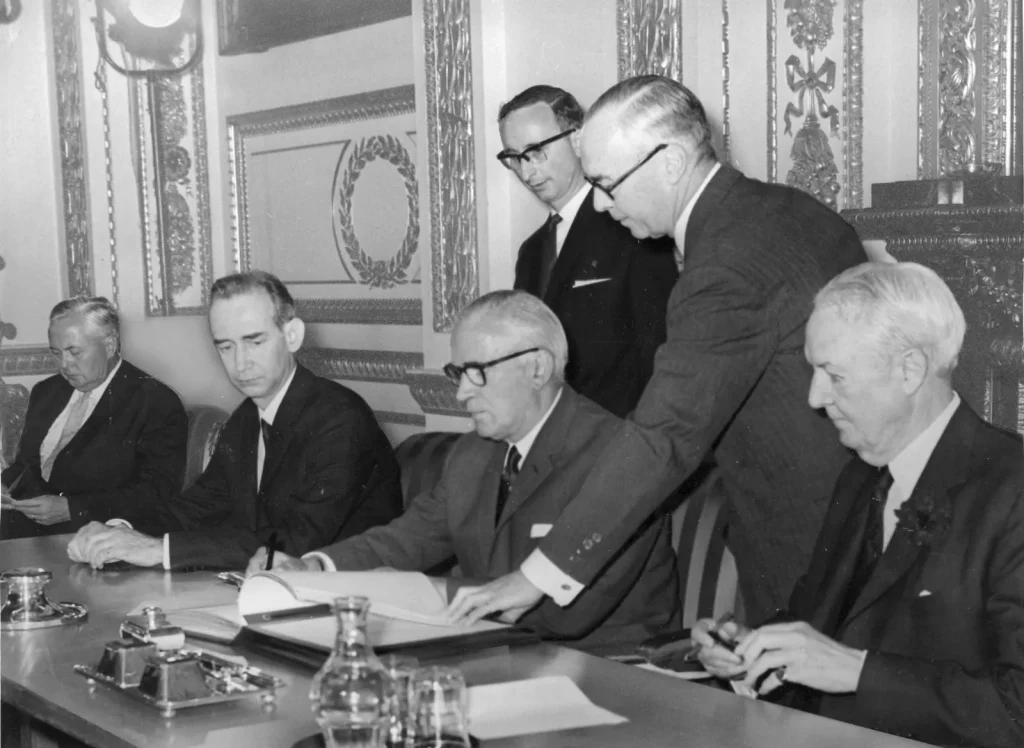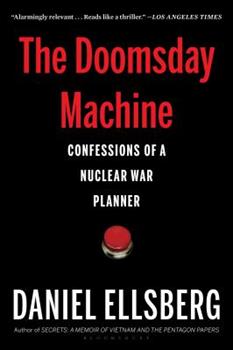On August 1, representatives of the 191 states that are parties to the 1970 Nuclear Non-Proliferation Treaty (NPT) will be meeting in New York for the tenth of the “Review Conferences” that are regularly scheduled to assess the effectiveness and reach of the treaty. (This “RevCon”, due to be held in Spring 2020, was delayed for two years because of the pandemic.) But meanwhile, a large group of states parties to the NPT have either signed onto or actually ratified the considerably more ambitious Treaty on the Prohibition of Nuclear Weapons (TPNW).

The photo above shows the jubilant meeting at the United Nations when the TPNW was adopted. It came fully into force in January last year.
Given the current size of the global momentum behind the idea of prohibition of all nuclear weapons, is there any point in retaining the clunky apparatus of the NPT? This question is especially pertinent given that the NPT is built on an openly discriminatory basis that has led numerous observers to conclude that it embodies nothing less than nuclear apartheid?
Let’s explain this, briefly. The first two Articles in the NPT’s text establish a clear distinction between States Parties that in 1967 were already “nuclear-weapon states” and those that were “non-nuclear-weapon states”– also known as the nuclear “haves” and the “have-nots.” Members of each of those classes had distinct responsibilities under the treaty. Crucially, the nuclear have-nots committed themselves to never acquiring nuclear weapons. The nuclear “have” states were allowed by the NPT to keep their nuclear arsenals— though in the treaty’s Article VI they made a fuzzy commitment, “to pursue negotiations in good faith on… a treaty on general and complete disarmament.”
No timeline for that commitment was specified. That was 52 years ago.
Back when the NPT came into force in 1970, five states were “recognized” as nuclear “have” states: the United States, Russia, Britain, China, and France. The first three of those were the key negotiators of the NPT’s text and were members of the NPT from the very beginning. China and France joined as nuclear “have” states in 1992.
At that point, the NPT’s list of nuclear “have” states lined up perfectly with the list of states that since 1945 have enjoyed permanent, veto-wielding states in the U.N. Security Council. Amazing, but true!
These vetoes give each of the nuclear “have” states complete impunity from ever being held accountable by the Security Council for any military-related actions they might take– including the voicing of nuclear threats, or even preparing for or launching nuclear war– even if these actions imperil the peace and security of all humankind. We have most recently seen that impunity operating in the case of Russia’s invasion of Ukraine, and the veiled threats of nuclear-weapons use that Pres. Putin and his colleagues have voiced in connection with the invasion. In earlier years, exactly similar impunity was visible in the United States’ invasion of Iraq and other aggressive U.S. military acts around the world– and in the repeated voicing by U.S. presidents of both parties of threats that, “all options are on the table” with regard to Iran or North Korea.
Thus, as in the case of Apartheid South Africa or Apartheid Israel, at the level of the global nuclear-weapons system the NPT ensures that this system stays rigged, possibly forever, on a clearly discriminatory basis.
The TPNW is very different. In its text, it recognizes that some states, upon joining it, may still either have nuclear weapons or, as in the case of many of Washington’s allies, consider themselves dependent on a “nuclear umbrella” operated by another state. But in Articles 4 (2) and 4(4), the TPNW establishes a clear road-map by which any such state that joins the TPNW would immediately dismantle (or divest itself of) such nuclear-weapons capability “in accordance with a legally binding, time-bound plan.”
Back in 1970, the whole world was still reeling from the terrifyingly close brush with mass death it had encountered during the Cuban Missile Crisis of October 1962. After that crisis, leaders and military planners in Washington and Moscow were reeling in particular from their realization of just how close they had both come to inflicting hundreds of millions of deaths worldwide through the activation of their nuclear-weapons systems. In response, in both capitals, leaders and planners worked hard to establish guard-rails and clear off-ramps to reduce as far as humanly possible the possibility that some “accident” or misunderstood “alert” might jerk one– or more likely, both– of those countries’ leaders into activating the mega-lethal arsenals of nuclear weapons that each possessed.
Daniel Ellsberg, who was a key nuclear planner in the Pentagon at the time, has written that when Pres. Kennedy asked his military leaders in 1961 how many people a U.S. nuclear attack might be expected to kill, the answer he got was 600 million people. (Everyone should read his book!)
The guard-rails against a nuclear catastrophe that Kennedy and Johnson worked with their Soviet counterparts to build included the installation of a leadership “hot-line” telephone, the first discussions on possible arms-control agreements– and the creation of a system to prevent the “horizontal” proliferation of nuclear weapons to any more states beyond the five that already had them. That system was the NPT.
The building (and maintenance) of those guard-rails helped for several decades to prevent the eruption of any other crisis as perilous as that of 1962. In the mid-1980s, the now-proven efficacy of those communications channels allowed even the super-skeptical President Reagan to start probing the global security system in some depth with his Soviet counterpart, Mikhail Gorbachev. (Reagan was also under a lot of domestic pressure to reduce the risk of nuclear war.) In 1987, Reagan and Gorbachev concluded an important new arms-control agreement, the Intermediate Nuclear Forces (INF) Treaty, that greatly reduced the threat of a nuclear confrontation in Europe.
Four years later, the degree of trust between the two capitals was enough to allow Gorbachev to completely dismantle his counter-NATO alliance, the Warsaw Pact, and to undertake the political dismantling of the entire Soviet governance system in Russia itself, without also having to worry– at that point, at least– that the United States and NATO might take advantage of the situation to attack his forces.
The stark truth today, 35 years after 1987, is that almost none of the guard-rails that were in place back then, that helped guard against the triggering of a global nuclear holocaust, are in place today. The INF Treaty? Gone. The presidential hotline? Gone. The Anti-Ballistic Missile (ABM) Treaty? Gone. A whole raft of other bilateral arms-control agreements and arrangement have also been allowed to expire… The only significant bilateral nuclear arms control agreement that remains today is the New START Treaty, which came into force in early 2011 and established new, lower limits for the numbers of “strategic” (that is, long-distance-assigned) nuclear warheads that each side could deploy.

The New START Treaty was initially set to expire in 2021. One of Pres. Biden’s earliest acts, in February 2021, was to agree with Pres. Putin to extend the treaty’s term for a further five years. Phew!
Regarding hotlines, in early March of this year, the United States and Russia agreed to establish a military-to-military hotline to resolve any misunderstandings regarding Ukraine,. (Back in 2015, the two sides had established a similar system to minimize military misunderstandings between the forces each side had in Syria.) But such “military deconfliction” mechanisms are different in kind and scope from an authoritative direct line between the two political leaders.
With or without the military hotline in place, Russia’s invasion of Ukraine and the nuclear threats Pres. Putin has made in relation to it have brought the world closer to the brink of nuclear omnicide today than it has been at any time since October 1962.
One possible upside to the talks planned for New York next week at the NPT RevCon is that, in a situation in which Washington has been working overtime to try to isolate Russia in every possible way, the talks just might bring high-level diplomats from both sides together in a forum in which– in addition to discussing how to keep in place the situation of Nuclear Apartheid from which both have greatly benefited– they might be able to discuss other matters on the global nuclear agenda as well?
But the nuclear “have-not” states that form a clear majority of the number of the world’s states– though not of the world’s population— will likely be much more impatient now, than they were at any of the NPT’s previous nine RevCons, with the continued prevarications and time-wasting of the nuclear “have” states. Unlike during any of those previous RevCons, this time the have-nots have a clear alternative to the highly discriminatory approach of the NPT. They have the TPNW.

One of the key issues expected to bedevil this year’s NPT RevCon is that of Israel, the only nuclear-weapons “rogue” state that has been coddled and allowed to act with complete immunity by the United States ever since it assembled its first nuclear weapons back in June 1967. The issue of Israel’s nuclear status, and the refusal of Israel and the United States to agree to longstanding plans by the rest of the states of the Middle East to establish a “Zone Free of Weapons of Mass Destruction” throughout the whole region, have been a constantly thorny item on the NPT RevCons’ agenda since 1995.
The States Parties to the NPT– who notably do not include Israel– agreed back in 1970 to hold these RevCons every five years. Check out the Arms Control Association’s account of what happened at the last one, in 2015, by scrolling down here.
That account noted that the RevCon ended on May 22, 2015–
without agreement on a final conference document. Key states parties could not bridge differences on the process for convening a conference on a WMD-free zone in the Middle East, as well as disagreements between the nuclear-weapon states and non-nuclear-weapons states over the pace of implementation of Article VI of the treaty and action steps agreed to at the 2010 conference. After nearly four weeks of sometimes acrimonious negotiations, the conference president, Ambassador Taous Ferroukhi of Algeria, presented a consolidated draft final document for adoption by consensus on the final day of the meeting. But the United States, the United Kingdom, and Canada announced in the final hours that they could not support the formula presented in the document for pursuing a conference to discuss the Middle East zone.
With the five nuclear-weapon states either unable or unwilling to make further disarmament commitments, a group of 107 states endorsed a statement, known as the “Humanitarian Pledge,” which calls on states “to identify and pursue effective measures to fill the legal gap for the prohibition and elimination of nuclear weapons.”
(See also this account of why the 2015 RevCon failed.)
What happened after that was that scores of nuclear have-not states got together, as the authors of that “Humanitarian Pledge” had urged. them to do… and two years later they concluded their complete nuclear-ban treaty, the TPNW!
… As to what will happen at the NPT RevCon that starts next week? I make no predictions. But maybe, during this RevCon or soon after, a number of the NPT’s current member states may conclude that continuing to belong to, and lend credence to, this unabashedly discriminatory organization no longer serves them well?



